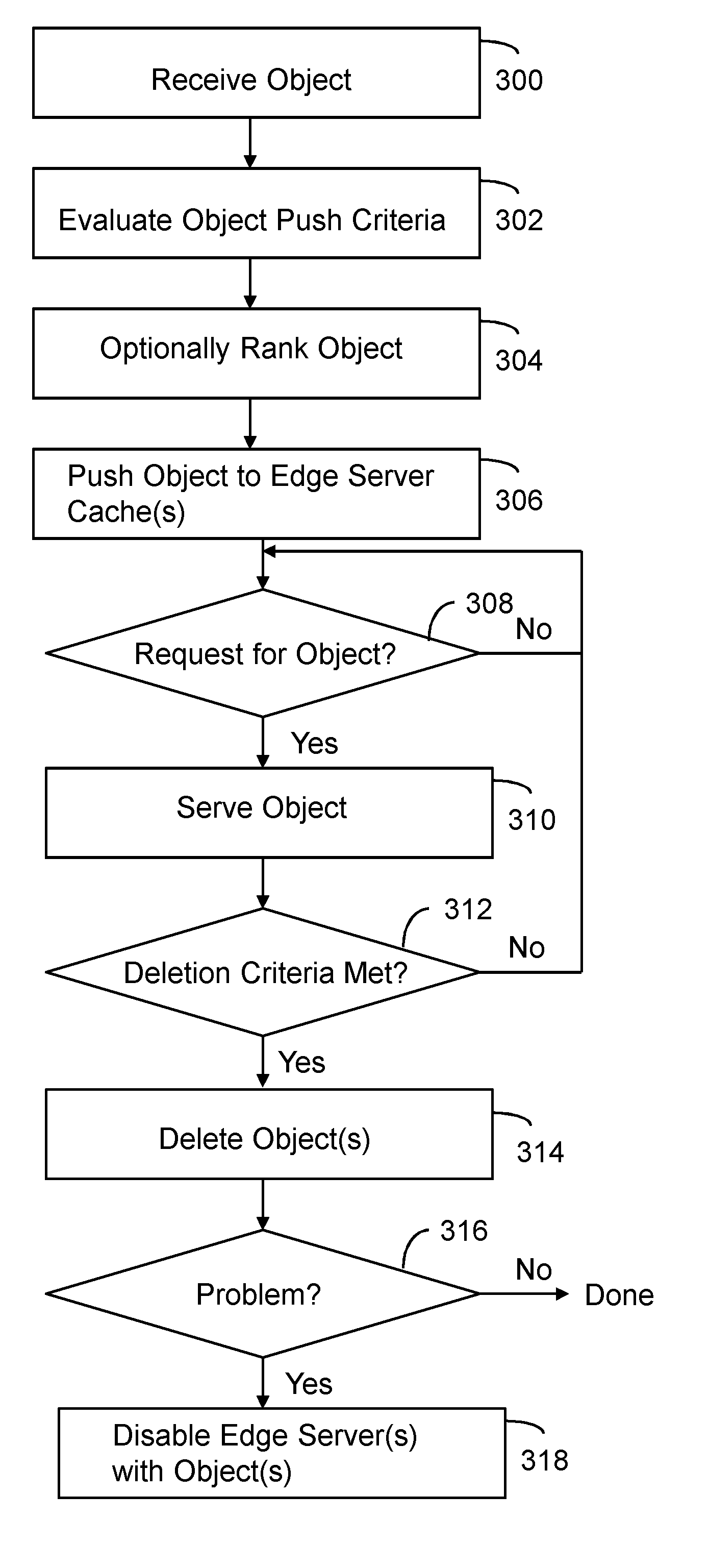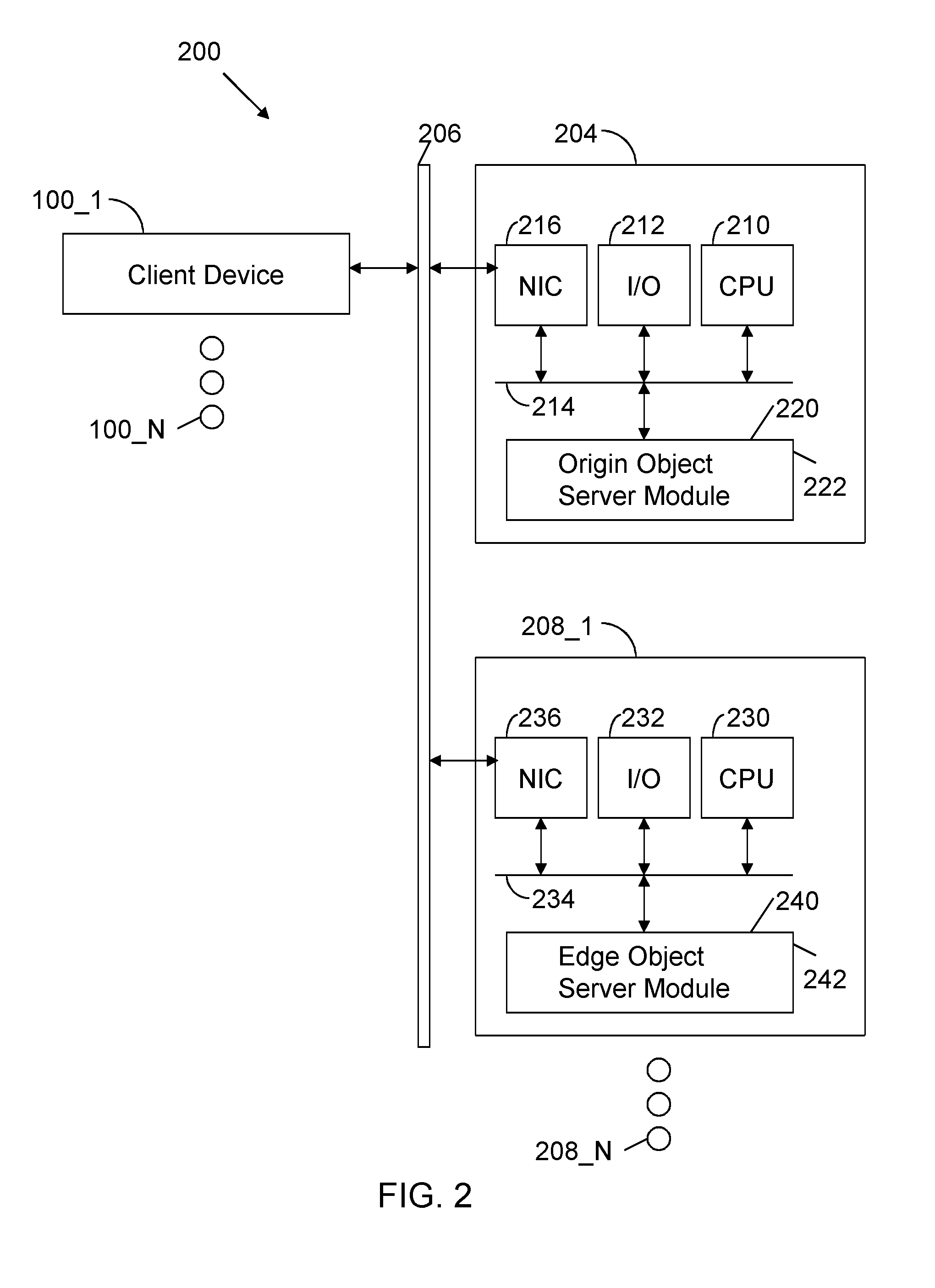Content delivery network for ephemeral objects
a content delivery network and ephemeral technology, applied in the field of network communication, can solve the problems of adding additional latency and not being suitable for objects
- Summary
- Abstract
- Description
- Claims
- Application Information
AI Technical Summary
Benefits of technology
Problems solved by technology
Method used
Image
Examples
Embodiment Construction
[0012]FIG. 1 illustrates an electronic device 100 utilized in accordance with an embodiment of the invention. In one embodiment, the electronic device 100 is a smartphone with a processor 102 in communication with a memory 104. The processor 102 may be a central processing unit and / or a graphics processing unit. The memory 104 is a combination of flash memory and random access memory. The memory 104 stores an ephemeral message controller 106. The ephemeral message controller 106 includes executable instructions to display ephemeral messages. An ephemeral message may be a text, an image, a video and the like. The display time for the ephemeral message is typically set by the message sender. However, the display time may be a default setting or a setting specified by the recipient. Regardless of the setting technique, the message is transitory. That is, the message is automatically deleted after a specified viewing period, a specified number of views or a specified period of time (e.g...
PUM
 Login to View More
Login to View More Abstract
Description
Claims
Application Information
 Login to View More
Login to View More - R&D
- Intellectual Property
- Life Sciences
- Materials
- Tech Scout
- Unparalleled Data Quality
- Higher Quality Content
- 60% Fewer Hallucinations
Browse by: Latest US Patents, China's latest patents, Technical Efficacy Thesaurus, Application Domain, Technology Topic, Popular Technical Reports.
© 2025 PatSnap. All rights reserved.Legal|Privacy policy|Modern Slavery Act Transparency Statement|Sitemap|About US| Contact US: help@patsnap.com



